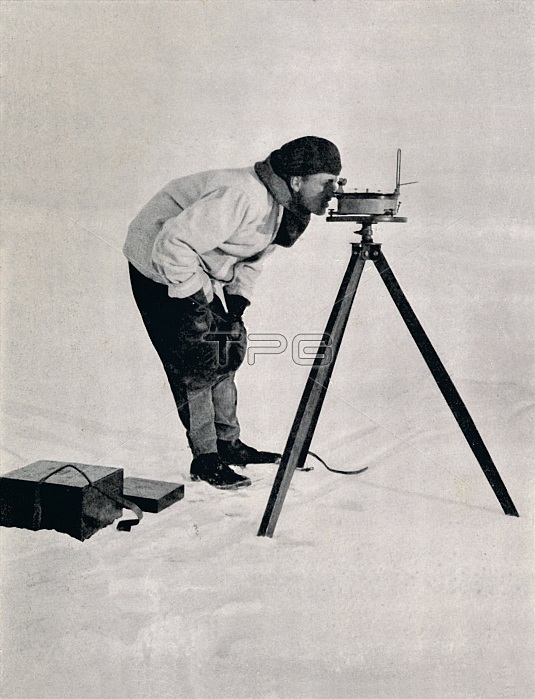
'Lieut. Pennell with a Prismatic Compass', December 1910, (1913). Lieutenant Harry Pennell (1882-1916) was responsible for the first sighting of Oates Coast, and named it after Captain Lawrence Oates. The final expedition of British Antarctic explorer Captain Robert Falcon Scott (1868-1912) left London on 1 June 1910 bound for the South Pole. The Terra Nova Expedition, officially the British Antarctic Expedition (1910-1913), included a geologist, a zoologist, a surgeon, a photographer, an engineer, a ski expert, a meteorologist and a physicist among others. Scott wished to continue the scientific work that he had begun when leading the Discovery Expedition to the Antarctic in 1901-04. He also wanted to be the first to reach the geographic South Pole. Scott, accompanied by Dr Edward Wilson, Captain Lawrence Oates, Lieutenant Henry Bowers and Petty Officer Edgar Evans, reached the Pole on 17 January 1912, only to find that the Norwegian expedition under Amundsen had beaten them to their objective by a month. Delayed by blizzards, and running out of supplies, Scott and the remainder of his team died at the end of March. Their bodies and diaries were found eight months later. From Scott's Last Expedition, Volume II. [Smith, Elder & Co., London, 1913]
| px | px | dpi | = | cm | x | cm | = | MB |
Details
Creative#:
TOP21800326
Source:
達志影像
Authorization Type:
RM
Release Information:
須由TPG 完整授權
Model Release:
No
Property Release:
No
Right to Privacy:
No
Same folder images:

 Loading
Loading